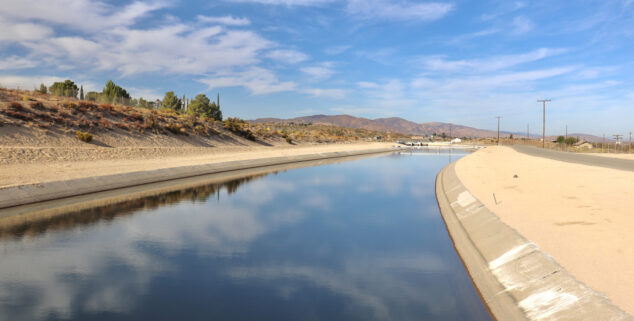Opinion
Securing California’s future water supply is critical
 The California Aqueduct Located in the Desert City Palmdale. Image by Brandon Boucher
The California Aqueduct Located in the Desert City Palmdale. Image by Brandon BoucherOPINION – Unless a new bill to grow California’s essential water supply, SB 366 (Caballero), is signed into law, our only progress on water supply this year – as this summer’s record temperatures foreshadow potential droughts to come – will be another, dubious conservation mandate, which is a multi-billion-dollar effort for a miniscule volume of water.
SB 366 is where state policy should start: With an overall target for a sustainable, statewide water supply, and a timeline to achieve that target. Our legislators agree: The legislature has done the right thing with the bill passing both the Assembly and Senate without receiving a single “no” vote and now needs only Gov. Newsom’s signature by Sept. 30 to become law.
Without it, we are left only with “Making Conservation a California Way of Life” —new rules to reduce residential water use across the state and save 200,000 acre-feet a year by 2040. The rules were modified after criticism from the Legislative Analyst’s Office – calling the proposals “unnecessarily complex” and likely to create challenges “in many cases without compelling justifications” – touched off a wave of backlash earlier this year. Even still, the costs of the scaled-back regulations – targeted at water suppliers, but ultimately paid for by customers – are projected to reach $4.7 billion.
All of this is to save a volume of water that represents a 0.25% share of the state’s total water supply. Unfortunately, this inefficiency is typical of California’s water management—the logical byproduct of an approach based increasingly on conservation. It is a way of coping with a 20th-century water system while in the 21st century—a system not intended to support millions more Californians, an economy larger than those of most countries, and a far more extreme climate.
Conservation does little to help South Monterey County’s dams, Nacimiento and San Antonio, which since the 1950s and ‘60s have supplied water, flood control, and hydropower for the Salinas Valley, and are now in need of maintenance and structural upgrades. Conservation also does little to help the 324 residents of San Lucas, whose groundwater has been unsafe to drink or shower in since 2013, but who could live normal lives again if a new pipeline, connecting to King City’s water system, was built.
So, as the Public Policy Institute of California has said, “it is not enough to rely solely on conservation to meet demand.” Conservation is important but should be regarded as a tool in the state’s toolbox, not as the toolbox itself.
Rather than manage water by scarcity, California should adopt the approach it takes for other sectors, where targets and timelines establish an ideal outcome and organize stakeholders toward that goal. Take the state’s plan to achieve carbon neutrality by 2045, or to build 2.5 million new units of housing by 2050, as examples.
SB 366 is this starting point for water. The bill would set necessary long-term targets for water supply and require state agencies – working with water agencies, wastewater service providers, and other stakeholders – to develop action plans to achieve those targets. Specifically, SB 366 would set an interim target of 9 million acre-feet of additional water by 2040, while the Department of Water Resources develops a longer-term target for 2050.
The intention and structure provided by SB 366 will allow for comprehensive, coordinated essential water supply development, which labor groups like ours are glad to support.
Water projects create quality jobs. Building or upgrading water infrastructure, to secure a long term and reliable water supply, brings together dozens of disciplines—site preparation, excavation, roadway construction, tunnel and shaft construction, trenching, pipelaying, concrete placement, hoisting and rigging, tamping, drilling and blasting, dewatering, waterproofing, and erosion control, to list just a few.
SB 366 would prove transformative — updating the state’s infrastructure, securing a more reliable supply, and providing many thousands of good California jobs in the process.
Joseph Cruz is the Executive Director of the California State Council of Laborers, representing 60,000 members statewide. Craig Miller is the General Manager of Western Water, servicing nearly 1 million Riverside County residents.
Want to see more stories like this? Sign up for The Roundup, the free daily newsletter about California politics from the editors of Capitol Weekly. Stay up to date on the news you need to know.
Sign up below, then look for a confirmation email in your inbox.

Leave a Reply